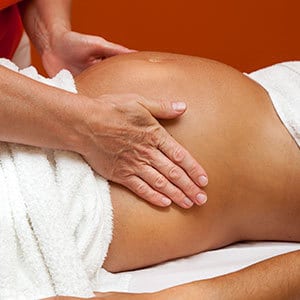
The What, Who, When, Why and How Basics of Pregnancy Massage
— December 15, 2014Massage therapy has been known for centuries to reduce stress, relieve tension and improve overall well-being. But combine the words ‘massage’ and ‘pregnancy’ and you are sure to get ambivalence from the medical community.
Is it safe? What purpose does it serve? Recent studies are proving that pregnancy massage, whether prenatal or postnatal, is a beneficial ingredient in the care of expectant women. With the guidance of a pediatrician and professional prenatal care providers, it may be incorporated in prenatal care routines as an emotionally and physically relaxing activity aimed at improving the pregnancy outcome and maternal health.
Why expectant mothers should consider prenatal massage:
Studies published in various pregnancy journals agree that prenatal massage offer a host of benefits. Some of them were listed by americanpregancy.org as follows:
- Hormone regulation. These changes in hormone levels led to reducing stress levels, better mood regulation and cardiovascular health. Reduced newborn complications were also evident when the therapy is incorporated into prenatal care.
- Reduction of swelling. Pregnant mothers normally have edema or swelling of the joints due to the heavy uterus, there is an increased in pressure on major blood vessels, reducing circulation in those parts of the body. With prenatal massage, it stimulates soft tissues to reduce fluid accumulated in the joints and removes tissue waste.
- Improvement of nerve pain. As the pregnancy months moves on, the weight of the uterus increases, making mothers suffer from sciatic nerve pain. Massage therapy will help release the tension on muscles located in the upper and lower leg that puts pressure on nearby nerves.
- Relief of symptomatic aches and pains. Massage focusing on the head, neck, shoulders and shoulders will help release tension on the muscles giving an optimal level of stress relief.
- Improved sleeping patterns. Mothers during pregnancy go through a lot of anxiety and discomfort which leads to poor sleeping patterns. Having a prenatal massage will release all those “feel good” hormones like serotonin, endorphins and dopamine to help in having a good night’s sleep.
How is prenatal massage done?
A pre natal massage typically lasts around an hour. Most practitioners use a pregnancy massage table designed to accommodate a woman’s pregnant belly. Specially designed pillows called bolsters may also be used to position a woman comfortably on her side. Lying on the side is often the most comfortable position for pregnant women having a massage. A massage table with a hole where the uterus can fit may still apply pressure to the abdomen, or allow the abdomen to dangle causing uncomfortable stretching of the uterine ligaments. Through the second trimester, you may prefer to lie on your back with a small, cushioned wedge placed under one hip to provide a slight elevation.
Depending on where the mother is in her pregnancy, the therapist may utilize various prenatal massage techniques. Examples of common types of massage include:
- Deep-tissue massage – with firm strokes pressing deep into muscles.
- Swedish massage – with long strokes to muscles and attention to joint mobility.
- Shiatsu – with pressure and tapping on acupressure points to stimulate the body’s natural energy.
Prenatal massage experts adapt their techniques to match the changes a woman’s body undergoes during pregnancy. Very light pressure on the abdomen is applied, if the belly is massaged at all as some therapists avoid massaging the abdomen altogether.
When is the best time to get a prenatal massage?
Like many forms of complementary medicine, massage therapy during pregnancy hasn’t been rigorously studied under strict clinical research methods. An area of controversy is whether it is safe to get a massage in the first trimester. Many massage therapists won’t give pregnancy massages during this period because of the potential for miscarriage. Other pregnancy massage experts argue that pregnancy massage does not, on its own, cause a miscarriage. However, there is no research to conclusively support a link between a massage and a miscarriage. Many miscarriages happen in the first trimester ergo some therapists and doctors advise against first-trimester massage to prevent any potential liability issues should a miscarriage happen.
Pregnant women with the following conditions listed by americanpregancy.org are also advised to consult with a health care provider prior to receiving a pregnancy massage:
- High risk pregnancy
- Pregnancy induced hypertension (PIH)
- Preeclampsia
- Previous pre-term labor
- Experiencing severe swelling, high blood pressure, or sudden, severe headaches
Who can conduct a prenatal massage?
Doctors advise against a massage during pregnancy because of a huge variation in training and a lack of certification standards. This is especially true for the specialty of pregnancy massage. There are no laws requiring a set minimum training for a massage therapist, regardless of whether or not the therapist’s client is pregnant. Seek care from certified prenatal massage therapists, those that have received training and know how to address specific pregnancy massage needs. As with any therapeutic approach to pregnancy wellness, women should discuss massage with their prenatal care provider. The best way to avoid the risks of prenatal massage is to be well- informed and to choose only knowledgeable professionals. Prenatal massage Singapore clinics and spas are easy enough to find and a few come recommended by blogger moms. Do a little research as to which would cater the most to your pregnancy needs.





Leave a reply